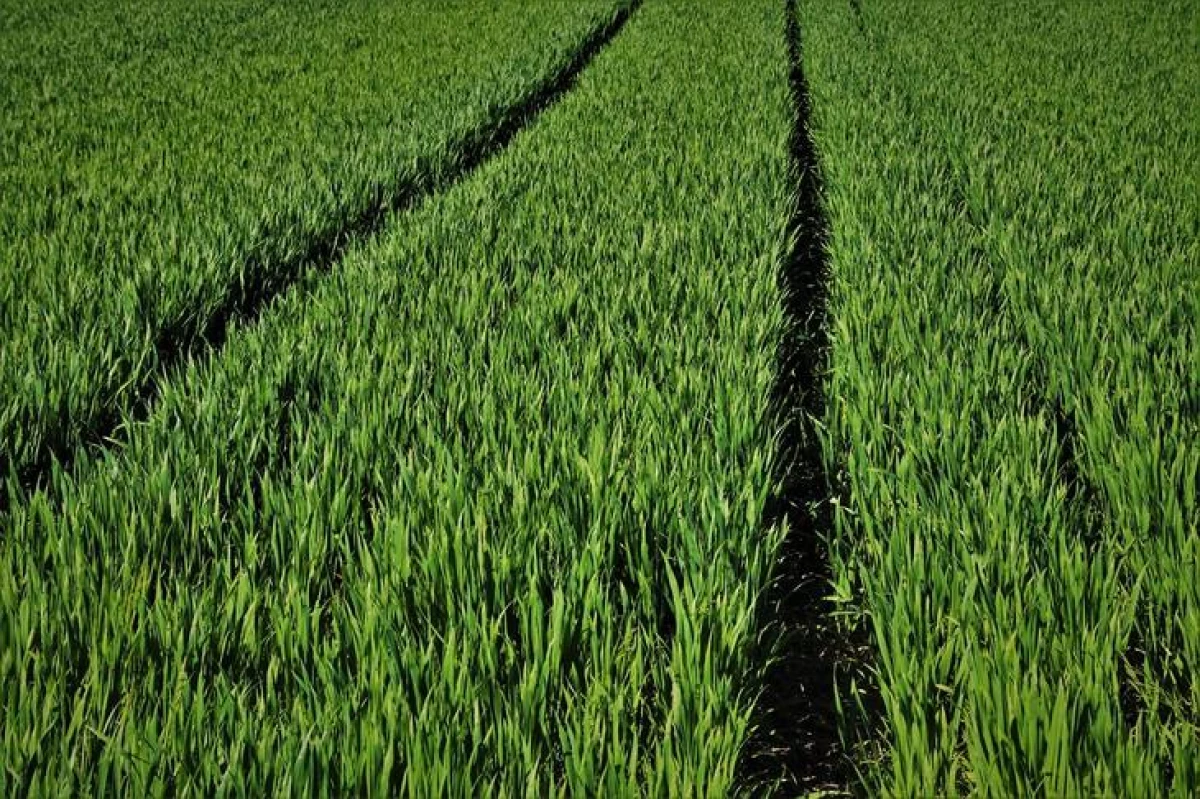
Sera is the fourth most important nutrient in wheat production after nitrogen, phosphorus and potassium. Previously, the plants were free to deliver sulfur on the fields through contaminated rains, but as the sewage sections improve the amount of sulfur dropped with rains, decreased sharply. And the agrarians have to fork out for fertilizers with gray, since otherwise the yield of culture can decrease, tells Bill Spiegel in his article on the portal www.agriculture.com.
Sulfur deficiency in wheat plants looks like this.
"As a rule, wheat with a sulfur deficiency is yellow and lowered and is observed in the fields of the field, where the soil erosion has previously been, - explains Dorivar Ruis Diaz, the soil fertility specialist from the University of Kansas. - You can see areas with a deficiency of sulfur on the tops of hills or slopes where erosion occurred and the content of organic substances decreased. Or wheat in areas where the upper layer of soil has been removed or cuts are made - for example, terraced or aligned fields - wheat sown there can also be symptoms. "
"Note: the deficiency of S in growing crops is often mistaken for lack of nitrogen (N). However, unlike nitrogen deficiency, when old leaves are "burning" and yellow, with sulfur shortages, pale yellow symptoms often appear first on the young or top of the top leaves. Wheat plants with a deficiency of S ultimately become chlorobic, "explains Ruiz Diaz.
The sulfur shortage in wheat is evident early in the spring, before the organic S is mineralized from the organic substance of the soil, and before the roots of wheat can germinate deeper to the use of any available salas S (sulfate).
"The lack of sulfur is often difficult to identify, because chlorosis is not always obvious," Ruiz Daiz warns. - Cultures with sulfur deficiency can also be low, thin-scale and spindle-shaped. In the case of wheat and other grain crops, maturation is delayed. The winter annual competition of weeds is also strengthened due to the slower growth and lack of good bunning. "
If in the history of the field there is already a set of sulfur deficit, farmers may consider the use of S as a preventive measure in winter.
What products with gray can be used
There are many S-containing fertilizers that are well suited for seasonal making and eliminating sulfur deficit:
Ammonium sulfate is a dry material that is a source of both nitrogen and S. However, it has a high acid-forming potential, and the pH should be monitored. Ammonium sulfate refers to good options for pre-sowing processing or feeding to correct the existing sulfur deficiency.
Gypsum is calcium sulfate and is usually available in a hydrated form containing 18.6% s, and in granules, which allows you to mix it with other materials. Since this is a sulfate source, it will be immediately accessible and suitable for spring feeding. However, the gypsum is not so soluble in water as many fertilizers, including ammonium sulfate.
New NPS products, such as microessentials and others, are materials from ammonium phosphate, which includes S, and in some cases such microelements as zinc. In most of these products, s is present in the form of a combination of elementary S and sulfate.
Ammonium thiosulfate is the most popular S-containing product used in the production of liquid fertilizers, since it is compatible with nitrogen solutions and other finished liquid products. Suitable for spring feeding.
Potassium thiosulfate is a transparent liquid product, it can be mixed with other liquid fertilizers. Like thiosulfate, suitable for early feeding in spring.
As the fourth most important nutrient, sulfur plays an important role in the formation of amino acids, proteins and oils and is crucial for the formation of chlorophyll.
Nitrogen and sulfur are associated to a certain extent, because sulfur plays a role in the activation of the nitratredundase enzyme, which helps to transform nitrates in amino acids. Consequently, the efficiency of nitrogen use may decrease with a lack of sulfur, says Ruis Diaz.
(Source: www.agriculture.com. Posted by: Bill Spiegel).
